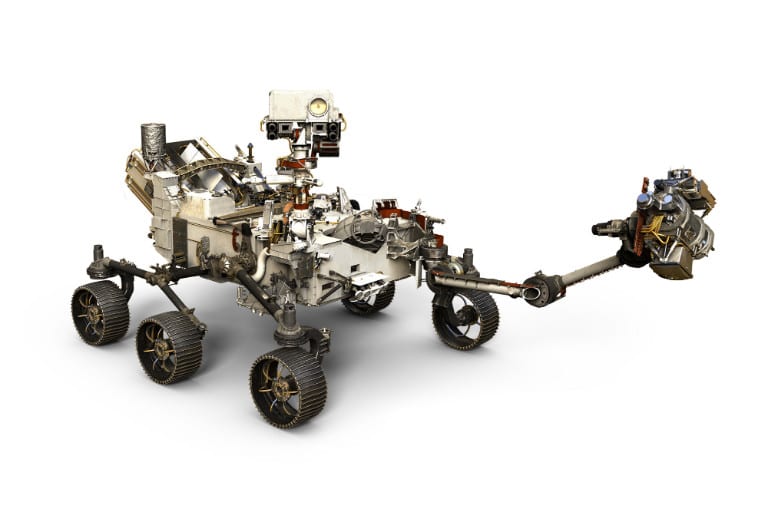Advancing Next-Gen Space Robotics: Motiv’s “Spacebreaking” Contributions to the Mars 2020 Perseverance Rover
The robotic arm of the 2020 Mars Perseverance rover about to touch down on Mars was perhaps the highest visibility subsystem development—a brainchild that arose from Motiv Space System’s partnership with JPL and more. But the robotic arm wasn’t Motiv’s only contribution to the Perseverance.
Recently, Tom McCarthy, Motiv’s VP of Business Development, sat down with Robotics Tomorrow to discuss Motiv’s next-gen capabilities and contributions to the rapidly expanding field of space robotics and more. Here are the highlights:
The 2020 Mission to Mars
Motiv, in partnership with Jet Propulsion Laboratory (JPL), designed and built the robotic arm on the NASA Perseverance Rover, which launched on July 30, 2020.
Launch Site: Cape Canaveral Air Force Station, Florida
Destination: Jezero Crater, Mars
Voyage Length: Six-and-a-half months’ journey from Earth to Mars
Projected Landing Date: February 18, 2021 at 6:43 p.m. PST
Mission Length: approximately 687 days (a.k.a. one Martian year)
1. Robotic Arm
The NASA Mission to Mars required something very specific of Motiv Space Systems. We were tasked with designing and building a robotic arm to handle an ever-evolving payload along with razor-sharp precise manipulation systems. The result?
“The arm…is the most precise and capable robotic manipulator system to be delivered to Mars” in the history of space exploration, states Tom McCarthy, VP of Business Development.
2. Force Torque Sensor
We were also tasked with creating the Force Torque Sensor at the end of Perseverance’s robotic arm. Our Force Torque Sensor imbues the robotic arm with a “sense of touch.” Within the sensor is a feedback mechanism that communicates with the arm about important things such as force and torque, giving it the ability to carefully extract and secure samples from the Martian surface.
Tom McCarthy, VP of Business Development says, “The Force Torque Sensor also doubles as a protective device to inform the arm that it has safely docked with the caching system before transferring an acquired core.”
3. Mastcam-Z Cameras
These Motiv Space Systems contributions “will allow for zoomable stereo images and videos never seen from Mars’s surface. We are excited to see these cameras’ depth and context as it should feel like we are standing right there with the rover on Mars”, as noted by Tom McCarthy, VP of Business Development.
This next-gen “stereoscopic capability” achieves many ranges of focal lengths and represents a powerful upgrade for the scientists examining the finer details of the Martian environment.
Read More
Ultimately, here at Motiv, we hope that our contributions will continue to strengthen the imaginations and amplify the research of scientists tasked with developing new technologies for space- and Earth-based innovations.
Click here to read Motiv’s entire Q&A on Robotics Tomorrow website: “Robotics Leads the Way for Space Exploration.”
